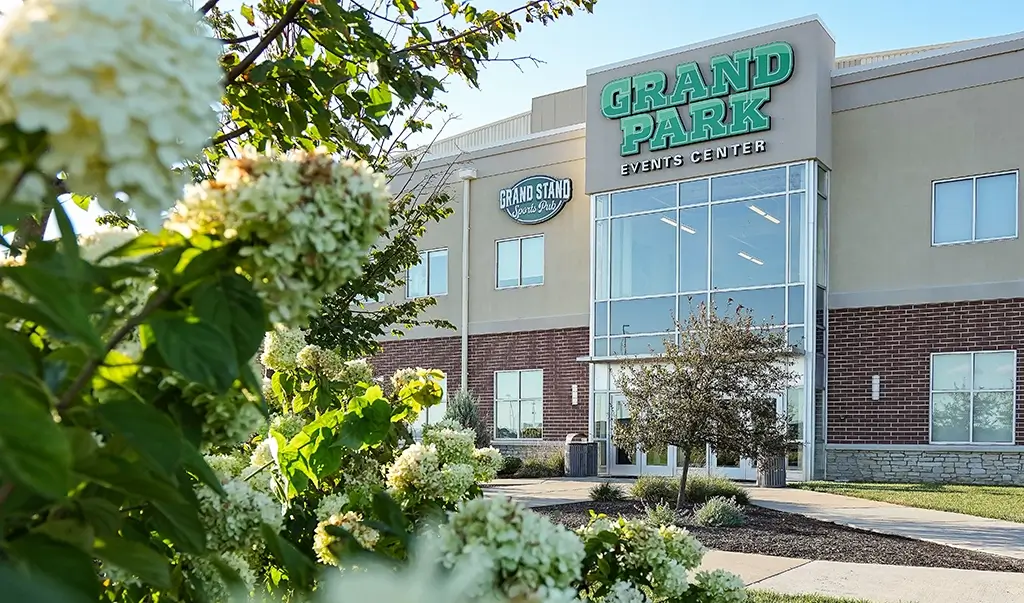Biz Voice magazine – “Small Companies, Big Goals”
By Tom Schuman
Best Places to Work Trio Offers Guidance
Make a phone call or send an e-mail to an entrepreneur in the early stages of trying to turn an idea into a company and the response might not be as timely as one would expect. But with good reason. The singular focus at that stage is to build a successful business. If the communication is not directly related to that mission, it may indeed have to wait. There are never enough hours in the day or days in the week for that sole operator.Transition to a few years later. The vision of the original concept has turned into the reality of a small business. Each outreach to your organization is critical as establishing relationships with customers, partners, suppliers, vendors and others is essential to growth and ultimate success. You and your team are quick to respond. Move down the road a little more in the evolution of your company. Although you can never fully relax (you’re an owner, remember, and you don’t know where the next hurdle may come from), the business is on solid ground. Response time and effectiveness are still critical, but sheer size and complexity prevent you from being the one doing the responding to those communications. You need a strong and capable staff. You need to be confident that they are providing the assistance and the answers needed. You need a workplace culture that will keep those talented people in place and attract others in the quest for continued growth.
How do you do it? We asked representatives of three of the smaller companies (in terms of number of employees) on the 2008 Best Places to Work in Indiana list to share their thoughts and insights:
People search
Before having the “luxury” of being able to worry about the workplace culture, one has to find the people with the requisite abilities to do the job. Jackson says that finding “someone with the right skill set and the right attitude” remains a challenge. That holds true, in particular, for the Jackson Systems division that handles large commercial projects. Harpring says there is no shortage of job applicants in the information technology field. Finding the right people to join the TLS team simply takes a concerted effort. “You’ve got to spend the time up front to screen a lot of people, talk to a lot of people, make sure you’re getting the most qualified person,” he explains. “What I do when I interview people is really look for more than just the black and white on the resumé or what they bring to the table as far as what they know. I’m thinking – ‘Are they a fit? Do they have the desire to not only do the work but to be part of a bigger organization?’ ”In the construction business, Ozdemir believes he and his team can teach the necessary job skills. But in order to continue the growth (2007 was the company’s best year and 2008 will be better, he states), the emphasis is on “trying to find the right people with the work ethic. People do make the difference.” And once you find the right people, the next obvious step is doing what it takes to keep them. “One thing that I think our company does a real good job of is to try and facilitate a culture where people feel they’re connected – that they have a say in every policy, every procedure,” Harpring shares. “I’m constantly asking the group I supervise how we can do things better. “People don’t feel that disconnect between ‘I just work here; I don’t have any input in this or that.’ It’s constantly soliciting feedback,” he continues. “Some of it obviously may not be implemented, but having the open communication, and not just saying it but actually doing it (is critical).”
Ozdemir points to the importance of social events (tickets to ballgames, birthday parties, retirement celebrations, etc.). He also strives to go to lunch with small groups of employees to better gauge both their on-the-job experiences and their bigger goals and aspirations. “We want to get people that enjoy what they’re doing and they feel part of what we’re doing,” he relates. “The challenges are how do you keep this in a fun, smaller environment even though you grow from 10, 20, 30, 40 employees. When it becomes 100, how do you maintain that? he asks.
A question for another day.
Professional assistance
Just as fun and social activities are a much-needed part of the equation, so to is providing avenues for work-time camaraderie. Jackson Systems has a term – skip-level lunches (because a management level is being bypassed) – for its scheduled CEOemployee gatherings. Jackson also has doughnuts in his office every Wednesday morning, “forcing” employees to come see him in an informal atmosphere. But it’s a decision that Jackson made a little over a year ago that likely sets his company apart from nearly all organizations its size. He explains: “I was committed to hiring an HR manager. I would tell my business friends and they would say, ‘Are you crazy? You’ve only got 20 employees and you want to hire a full-time HR director or manager?’ And I would say yes, because the most important thing that we can do is strive to meet the employees’ needs. “I didn’t hire the person to write a bunch of manuals and things like that,” Jackson adds. “I wanted them to listen to the employees and the input they have in making the company better. It’s made a huge difference … to take some of that off of me … but to also have someone that all employees know that they can go to at any time if they’ve got issues.” As part of the leadership of growing companies, it’s not feasible for key executives to be “doing pretty much everything” as they did in the early stages, Jackson notes. But are there ever times, as a result of that evolution, that you don’t have a good sense of how all the pieces are fitting together? The consensus answer: “No,” not as long as we have the right people. Harpring elaborates, “We have pretty distinct differences in departments, so one thing we do is try to make sure that we have meetings that involve every department. Many projects go across departments, but I think that plays into the whole unison, that whole collective thought process where everyone is on the same page.”
Keep on listening
Being among the Best Places to Work in Indiana means that these companies are seeking buy-in by eliciting – and listening to – employee comments. This survey, however, and some of the methods described earlier are only part of the feedback. Keystone Construction utilized an outside firm to conduct an employee survey earlier this year. Ozdemir says that the employee thoughts and analysis provided by the third party proved quite interesting, helping to reaffirm the direction of the company. While he notes that his company is not large enough to implement some of the ideas (onsite gym, as an example) in the Best Places to Work questionnaire, a suggestion box has yielded positive results. “One of the ideas was can we put a TV in the break room,” he shares. “We put a TV in the break room – as simple as that. It’s not just a box and you put (suggestions) in there and nobody reads it.” That is just one of the ways “we’re going to stay in touch with the employees as close as possible.” Harpring cites annual review processes and more frequent sessions with newer employees as some of the formal methods utilized. Previously, the company completed what he termed a “reverse evaluation” in which employees judged not only their own performance but that of their supervisors. “We try to provide as much feedback as possible and hopefully that’s reciprocated, where we’re receiving as well as giving out feedback on a consistent basis. I don’t think it should ever be something that’s looked at like a once-a-year type of thing or a designated 90 days. We just sit down and actually talk. You shouldn’t have anything of any big proportion that surprises you.”
As far as what employees are saying, Jackson received strong ideas about his company’s paid time off (PTO) policy. Changes were implemented. “Because we are family focused and it’s extremely important to me that employees put their families first, we’ve restructured (the PTO system) to be even more flexible for them,” Jackson discloses. “Co-workers do feel really comfortable that if they have a need they can come to me or to their manager and explain why. Short of it being something ludicrous, we’re probably going to do it for them.” Insurance and other benefits quickly enter the conversation at the other employers. Ozdemir says the hope was to continue to provide 100% insurance coverage, but the reality of 20% annual health care premium increases has forced a cutback in that area. His company has added a 401(k) and disability coverage in recent years. “You’re trying, as every business owner would love to do, to provide the best you can to the employees,” he contends. When the cost of benefits nearly equal or exceed salaries for some on the lower end of the pay scale, difficult decisions must be made. “In a growing business, overhead is a very important part of the success.” Harpring affirms that the insurance and overall benefits discussion now occurs earlier and more often in the interview process.
Paying attention to retention
Whether it’s rising benefit costs, a lifestyle choice or any number of other reasons, the challenge of keeping good employees continues to grow. In an age in which people frequently change careers, not just jobs, how are these companies able to retain strong workers? “The people that we hire are maybe unique,” Harpring offers. “They have more of a career path that they have chosen. People really just want an opportunity to know that they can advance. Within our company, we have so many employees that basically started at the ground level, and now they have a progression and they’ve worked their way to a higher position.” Ozdemir notes that continued company growth helps provide individual opportunities for promotion. Jackson admits to a limited advancement program for a company with a smaller employee count. He can think of only two people, however, who voluntarily left his company over its 11 years, a strong indication that “we’re doing something right.” He also believes the decision to hire a full-time human resources manager will continue to pay benefits. In addition to the expertise in working with employees and addressing their concerns, it frees Jackson up to work on building existing and establishing new relationships. “It doesn’t take a whole lot of sales to pay for a good HR manager’s salary. It was a little tough in the beginning to make the sale to the rest of the management team, but as we got into it we realized it was an obvious good decision.”
Service speaks loudly
A premise one should have no trouble selling to management: A positive internal culture yields external benefits. Customer familiarity with people and practices adds to the products and services that are being delivered. “Our business is relationship based,” Ozdemir asserts. “Ninety-nine percent of our business is through referral. Seventy percent of our business is repeat customers. When we’re building or renovating something for a client, they already have a good impression.” Nevertheless, client surveys are still part of the mix for Keystone, as well as Jackson Systems.
Other keys, according to Jackson, are: no automated attendant (phone calls go directly to people who can solve customer needs); the ability to meet directly with customers; doing business the way (phone, fax, web site, etc.) customers prefer; and empowering employees. “If a customer is unhappy for whatever reason, they (employees) know they are allowed the flexibility to make the call,” Jackson explains. “Afterward, if maybe it’s not the same approach one of the managers would have chosen to handle the situation, we may sit down and have a discussion, but we’re not going to be yelling and screaming. We’re going to use it as a learning experience.” TLS does not offer unique services, Harpring admits, “but it’s that extra bit of personal touch. When people contact us, they’re hearing the same people week after week, year after year. They ask for people by name. It’s not a revolving door type of environment. That is critical.”
Positive signals
So, at the end of the day, what’s the measuring stick for workplace success? Ozdemir says that despite not “having that big fire extinguisher to try to fix the problems” anymore, he knows the company is on the right track through the client survey responses and by seeing people “take leadership positions and getting things done.” Teamwork is one of the keys for Harpring and TLS. “It’s people going out of their way, helping other departments … the symbiotic feeling of we’re all in this together.” Jackson agrees with his colleagues, adding a closing thought: “When you hear a lot of the co-workers laughing and having a good time, that’s probably a real good sign that there’s a positive attitude in the air.”




